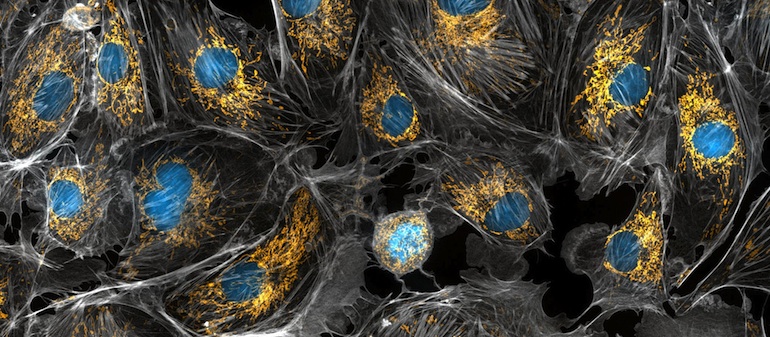Constant mutation and shaping by natural selection can make the once-identical genomes of isolated populations of organisms very different from one another. This genetic divergence can lead to two such populations no longer being able to interbreed successfully—speciation. In their paper in the March issue of G3, Lamelza and Ailion show that harmful interactions between diverged nuclear and mitochondrial genomes may be the first step towards speciation in isolated populations of soil nematodes.
The tiny nematode Caenorhabditis nouraguensis, a relative of the model organism C. elegans, has been found living in rotting flowers and fruit in tropical French Guiana. To study genetic differentiation resulting in inviable hybrids between populations of C. nouraguensis, the authors used two isolated lines that were established by two pregnant females collected roughly 100 km apart. Though hybrid inviability is often observed in crosses between distinctly separate species, studying it between populations in this way is useful because it can reveal the very first stages of speciation. They crossed these two lines to generate first and second generation hybrids. Importantly, they carried out these crosses in both directions, so that in some crosses strain 1 was the mother, while in other crosses strain 2 was the mother.
The first generation of hybrids was perfectly healthy, but when the hybrids were crossed together to make the second generation, at most only three quarters of the offspring of both crosses lived to young adulthood. This suggests at least one of the genetic factors that cause the incompatibility must be recessive. Additional crosses between hybrids and the pure parental lines showed that the deaths of those second generation offspring were due to homozygous recessive factors of one strain’s nuclear genome that were incompatible with the other strain’s mitochondrial genome. Unlike the nuclear genome, where half comes from each parent, the mitochondrial genome is only passed down through the mother because she deposits her mitochondria in the cytoplasm of the egg.
When the authors performed similar crosses with other independently collected isolated strains of C. nouraguensis, they found significant incompatibility with at least one nuclear genome for every unique mitochondrial genome they tested. Interestingly, some of these effects varied between experiments, and the same was true of the incompatibility caused by the mitochondria of strain 2. In some trials, the hybrid inviability disappeared when the crosses were continued for several generations. Every cell has a large number of mitochondria within it, and the authors hypothesize that this particular strain has multiple genetically distinct mitochondrial genomes present. Only one of these genomes carries the allele that is incompatible with the nuclear genome of strain 1.
Their results suggest that incompatibility between the mitochondrial and nuclear genomes may be widespread among isolated populations within this species. The situation observed here—where only some of the mitochondria in a population carry the incompatible allele—represents the very earliest stages of speciation, before the genetic factors that cause hybrid inviability become fixed. The mitochondrial genome is small, and though it carries genes that are critical for mitochondrial function, mitochondria also depend on the nuclear genome to help them power the cell. This makes coevolution between the mitochondrial and nuclear genomes critical for survival. In an isolated population, rapid coevolution between the two could be due to adaptation—to use of a different carbon source for energy, perhaps, or just accumulating compensatory mutations that keep the whole system running. When the two halves are split apart they fail to work properly, resulting in the hybrid’s death, and creating a barrier to interbreeding that could eventually result in speciation.
Lamelza, P., & Ailion, M. (2017). Cytoplasmic-nuclear incompatibility between wild-isolates of Caenorhabditis nouraguensis. G3: Genes| Genomes| Genetics, 7(3), 823-834. doi:10.1534/g3.116.037101































